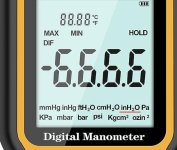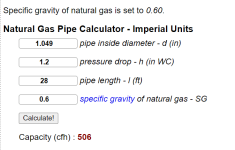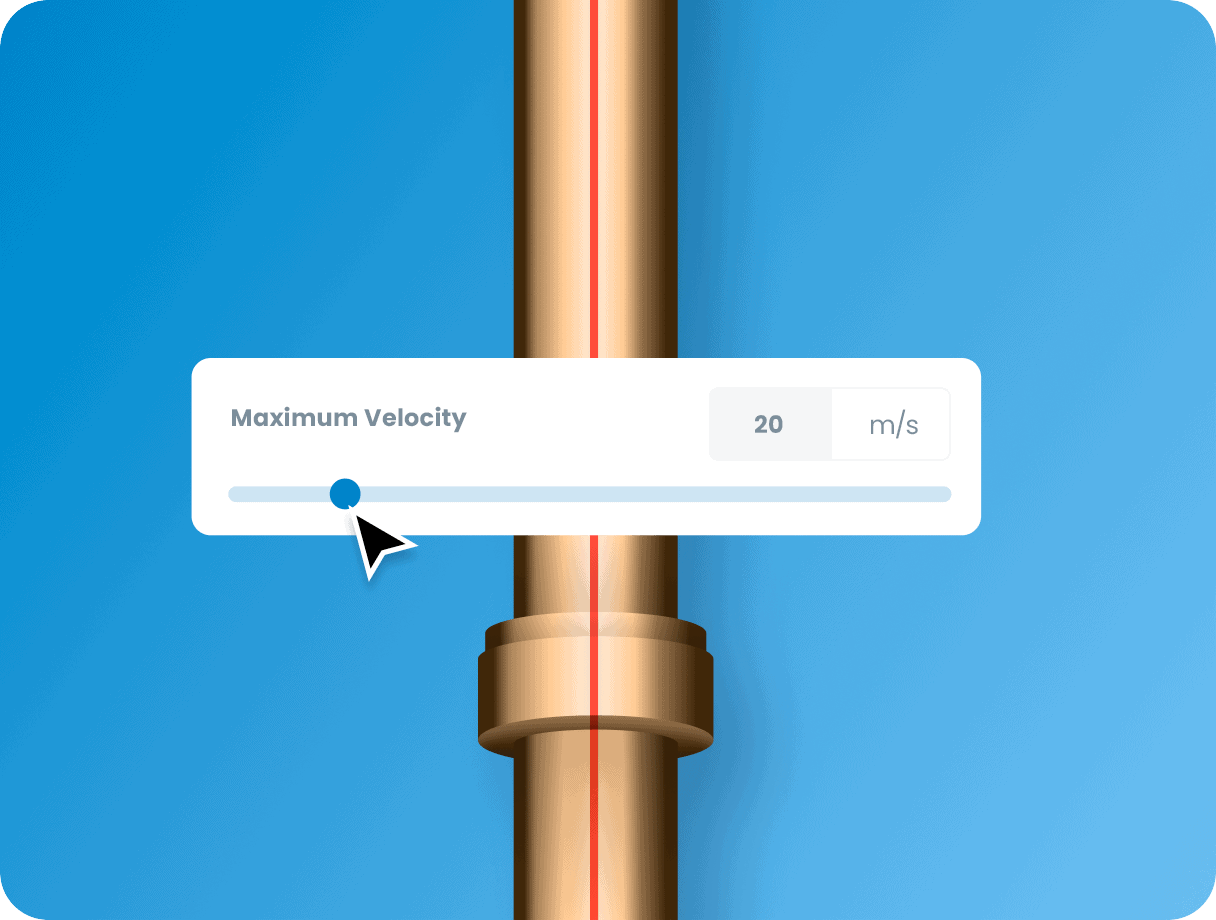Heater stopped igniting after whole home generator installation
- Thread starter dailygenesis
- Start date
You are using an out of date browser. It may not display this or other websites correctly.
You should upgrade or use an alternative browser.
You should upgrade or use an alternative browser.
Verify the gas pressure before the heater starts and as the heater tries to start.
The pressure at the gas valve inlet needs to remain in the 4.5" w.c to 10.5" w.c range.
The pressure should drop about 0.5" w.c from static to dynamic.
If the drop is greater than about 1" w.c, then there is probably a problem with the gas supply.

The pressure at the gas valve inlet needs to remain in the 4.5" w.c to 10.5" w.c range.
The pressure should drop about 0.5" w.c from static to dynamic.
If the drop is greater than about 1" w.c, then there is probably a problem with the gas supply.

So, the generator plumber won't get into the heater to test the pressure because its under warranty and he says he can't touch it. If I can get myself a manometer is there any reason I can't do this testing myself? I've been reading about it and it doesn't seem so difficult just to verify the pressure at the heater?Verify the gas pressure before the heater starts and as the heater tries to start.
The pressure at the gas valve inlet needs to remain in the 4.5" w.c to 10.5" w.c range.
The pressure should drop about 0.5" w.c from static to dynamic.
If the drop is greater than about 1" w.c, then there is probably a problem with the gas supply.
It is relatively easy.
There are many videos on YouTube about testing gas pressure.
Can you show the gas valve from several angles?
Basically, there should be a pressure test port on the inlet side and the outlet side where you can remove the plug and screw in a 1/8" npt brass test nipple that comes with the meter.
In any case, only you can decide if you are qualified to test the gas pressure.
The person who goes hands on with the equipment has to take final responsibility for whatever happens.


There are many videos on YouTube about testing gas pressure.
Can you show the gas valve from several angles?
Basically, there should be a pressure test port on the inlet side and the outlet side where you can remove the plug and screw in a 1/8" npt brass test nipple that comes with the meter.
In any case, only you can decide if you are qualified to test the gas pressure.
The person who goes hands on with the equipment has to take final responsibility for whatever happens.


Can you show the gas valve from several angles?
So, here's an image of the gas valve in the heater and also a diagram from the installation manual. The diagram for this particular heater identifies the position of the inlet pressure tap, but then has a description of where to find the manifold pressure tap that is not on the diagram.
I've labeled on the photo where I believe the two tap points to be. Can you let me know if this looks correct?


Thanks. And further question. Looking at the gas pressure testing instructions in the diagnostic manual (see image below).Ok, that looks correct.
- Inlet Static Pressure (valve off) does that mean just the system isn't running or do I need to close the valve with the manual on/off knob?
- Inlet Load Pressure (valve on / energized) -- does that mean heater is running? If so, how do I test this if heater won't ignite?
- Manifold Pressure (valve on / energized) -- does that mean heater is running? If so, how do I test this if heater won't ignite?

I just ordered this and it will be here tonight - Amazon.com
Any concerns on that one as opposed to analog?
@JamesW
Any concerns on that one as opposed to analog?
@JamesW
Heater not trying to fire.
- Inlet Static Pressure (valve off) does that mean just the system isn't running or do I need to close the valve with the manual on/off knob?
Watch for the pressure change as the gas valve is supposed to open during attempt to light.
- Inlet Load Pressure (valve on / energized) -- does that mean heater is running? If so, how do I test this if heater won't ignite?
If no pressure drop, then the gas valve is not opening.
Most of the time, you do not need to worry about the manifold pressure.
- Manifold Pressure (valve on / energized) -- does that mean heater is running? If so, how do I test this if heater won't ignite?
That looks ok.I just ordered this and it will be here tonight - Amazon.com
Any concerns on that one as opposed to analog?
@JamesW
Got it. I know valve is opening. I can see and hear it start to draw gas from the meter. Will attempt this testing when I get my manometer tonight.Watch for the pressure change as the gas valve is supposed to open during attempt to light.
If no pressure drop, then the gas valve is not opening.
Plumber should be back to replace regulator with larger-capacity version any moment. Hopefully that solves the ignition issue.
The regulator needs to be near the heater, not the meter.Plumber should be back to replace regulator with larger-capacity version any moment.
They should have waited until after the gas company replaced the meter to a larger capacity meter and provided the higher 2 psi pressure.
Close the valve near the heater before removing the test plug or gas will get out.Will attempt this testing when I get my manometer tonight.
Screw in the test nipple and connect the meter.
Open the gas valve near the heater and check the static pressure.
As the heater tries to fire, the pressure should drop about 0.5" w.c (water column in inches of H2O).
If the pressure goes too low, you have a gas supply issue.
Close the valve near the heater before removing the meter or gas will get out.
Reinstall the test plug and open the valve outside of the heater.
Check for gas leaks using a soap solution.
Only do what you are sure that you can do safely.
Everything is at your own risk based on your own research and your own decisions.


They told me the gas company won't elevate the pressure until the regulators are installed. That seems to make sense as the gas company wouldn't want to overload something but it means we have to have the regulators now. Gas company is scheduled to come Friday and I plan to talk to them about all of this as well.The regulator needs to be near the heater, not the meter.
They should have waited until after the gas company replaced the meter to a larger capacity meter and provided the higher 2 psi pressure.
On the location of the regulator -- I'm going to ask the plumber today about that. The project manager I spoke to said they don't usually put the regulator that close to the appliance. He said they need 8-10 feet or so between regulator and appliance. Regardless, with only ~12 feet between meter and appliance is this really a big issue?
Thanks, will do. Would I typically need to put anything on the test plug threads before putting it back in to prevent leaks?Close the valve near the heater before removing the test plug or gas will get out.
Screw in the test nipple and connect the meter.
Open the gas valve near the heater and check the static pressure.
As the heater tries to fire, the pressure should drop about 0.5" w.c (water column in inches of H2O).
If the pressure goes too low, you have a gas supply issue.
Close the valve near the heater before removing the meter or gas will get out.
Reinstall the test plug and open the valve outside of the heater.
Check for gas leaks using a soap solution.
Only do what you are sure that you can do safely.
Everything is at your own risk based on your own research and your own decisions.
If we have 3 90 degree elbows, that is about 8 feet (equivalent) + 12 feet = 20 feet.Gas line from the meter to the heater is about 12 feet and is 1" pipe. Based on what I see in the specs, this pipe seems undersized too (should be 1.25").
If the distance goes down 4 feet, across 12 feet and then back up 4 feet, then that is 4 + 12 + 4 + 8 = 28 feet.
In any case, the manual says that the pipe needs to be 1.25".
So, you need to follow the manual.
If you put the regulator near the heater, then the size is ok.






Natural Gas - Pipe Sizing Calculator
Calculate capacities and dimensions of natural gas pipe lines.


FREE Accurate Gas Pipe Sizing Calculator | Optimize Your System
Accurately size gas pipes with h2x Engineering's free gas pipe sizing calculator. Optimize efficiency, ensure safety, and streamline design.
Thread Status
Hello , This thread has been inactive for over 60 days. New postings here are unlikely to be seen or responded to by other members. For better visibility, consider Starting A New Thread.







